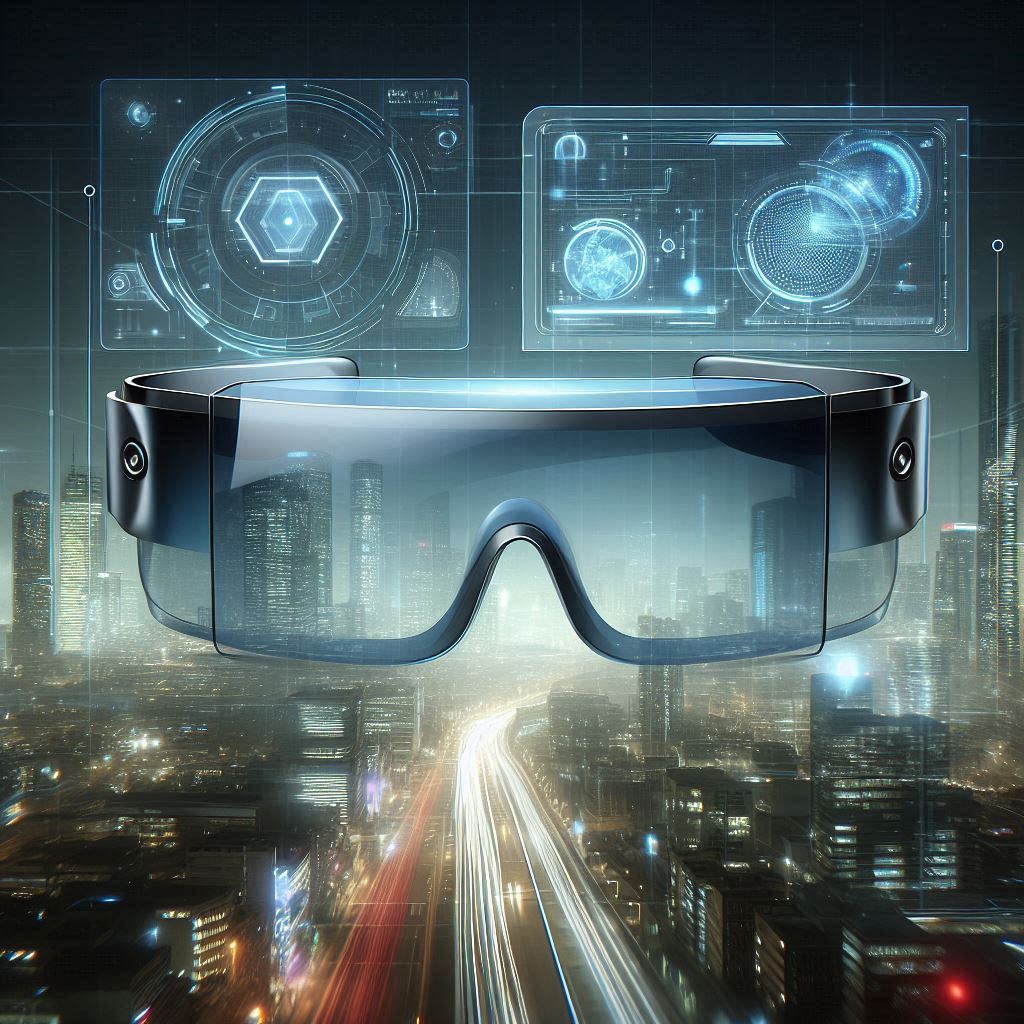In a world where technology is constantly shrinking and becoming more personal, smart glasses are emerging as the next revolutionary leap in mobile tech. For decades, we’ve relied on smartphones as our central hub for communication, entertainment, and productivity. But now, a new wave of wearable innovation is promising to replace that familiar rectangle in your pocket.
Could smart glasses really become the next smartphone? Let’s dive into this exciting future—and why it might arrive sooner than you think.
1. What Are Smart Glasses?
Smart glasses are wearable devices that look like regular eyeglasses but come equipped with augmented reality (AR), cameras, microphones, displays, and even AI assistants. Their purpose is to overlay digital content on the real world, offering hands-free access to information in real time.
Think of Google Glass, Meta Ray-Ban Stories, Snap Spectacles, or the newly released Apple Vision Pro Lite—each of these represents a unique attempt to fuse fashion with function.
2. Why Smart Glasses Are Gaining Momentum
We’re living in the era of wearable convenience. Smartwatches paved the way, and now consumers are craving less intrusive, more integrated tech.
The shift toward ambient computing—where devices blend into our environment—means smart glasses are in a perfect position to thrive. No need to look down at your phone; everything you need could soon be projected right in front of your eyes.
3. The Evolution: From Google Glass to Apple’s AR Push
In 2013, Google Glass made a splash as the first high-profile smart glasses. While innovative, it was ahead of its time—battery life was poor, and the design wasn’t exactly fashionable.
Fast forward a decade, and we now have sleeker, more powerful offerings. Apple, Meta, and Samsung are pouring billions into AR and smart wearables. Apple’s entry into the AR market is particularly significant—it often signals when a product category is about to go mainstream.
With better processors, longer battery life, and more stylish frames, the technology has matured—and consumer interest is growing rapidly.
4. How Smart Glasses Could Replace Smartphones
Here’s where it gets interesting. Imagine being able to:
-
Make calls or send texts using just your voice.
-
Read emails, translate languages, or navigate cities—all without looking down.
-
Stream music, access real-time GPS directions, or scan QR codes just by looking.
-
Receive visual alerts, reminders, and news headlines right in your field of vision.
All of this could be done without touching a screen. That’s the power of contextual computing—where your glasses know where you are, what you’re doing, and what you need next.
5. Key Features That Make Smart Glasses a Viable Smartphone Replacement
To truly replace smartphones, smart glasses need a robust feature set. Fortunately, many models already include:
-
Voice assistants (like Siri, Alexa, or Google Assistant)
-
Built-in cameras for photos, video, and even live streaming
-
AR display overlays that show useful data (weather, messages, directions)
-
Touch or gesture controls
-
Bone conduction audio for private sound delivery
-
5G or Bluetooth connectivity to sync with your digital life
With AI integration, smart glasses can even learn your habits and adapt to your preferences—something smartphones only partially achieve today.
6. The Role of Artificial Intelligence in Smart Glasses
AI is the engine driving smart glasses toward becoming truly intelligent devices. Here’s how:
-
Natural language processing allows you to talk to your glasses as naturally as a friend.
-
Computer vision lets glasses understand and analyze what you see.
-
Real-time translation can break down language barriers during conversations.
-
Predictive assistance means your glasses can offer help before you even ask.
Imagine walking past a restaurant and instantly seeing reviews and menu options floating beside it—or looking at someone and being reminded of their name and last conversation.
That’s not science fiction. That’s AI-powered AR, and it’s already being prototyped.
7. Use Cases Transforming Everyday Life
Smart glasses are not just tech toys; they’re game-changers across industries:
-
Healthcare: Surgeons can view patient data mid-operation.
-
Logistics: Workers can see instructions without stopping to check devices.
-
Education: AR overlays help students learn interactively.
-
Retail: Try on clothes virtually while walking through a store.
-
Fitness: Real-time performance stats appear as you exercise.
Smart glasses are redefining what it means to “see information.”
8. The Fashion and Social Factor
One reason Google Glass failed was its “cyborg” appearance. Today’s designers are fixing that. Collaborations like Meta + Ray-Ban and Snap + Prada show that style and tech can coexist.
These aren’t clunky gadgets—they’re fashion-forward accessories with cutting-edge functionality. And as glasses become more socially acceptable, adoption is expected to skyrocket.
Soon, not wearing smart glasses might be like refusing to own a smartphone.
9. Privacy and Ethical Concerns
Of course, not all is rosy in the world of smart glasses. Issues include:
-
Privacy: Built-in cameras raise surveillance concerns.
-
Distraction: Constant overlays may lead to attention issues.
-
Security: More access points mean more potential vulnerabilities.
-
Data tracking: AR experiences rely heavily on personal data.
These are serious challenges—but they’re not insurmountable. Just like smartphones evolved with better privacy controls, smart glasses will need thoughtful regulation and design ethics.
10. When Will Smart Glasses Replace Smartphones?
Experts believe we’re less than a decade away from widespread adoption. According to market analysts, the global smart glasses market is expected to exceed $20 billion by 2030.
And as tech giants like Apple, Meta, and Samsung race to launch compelling models, we’re already seeing signs that smartphones may not remain our central device for long.
The tipping point? A lightweight, affordable, stylish pair of glasses with full AR, voice, and AI capabilities—expected to hit the mainstream by 2026–2028.
11. Challenges Ahead: What’s Holding Smart Glasses Back?
Despite all the buzz, there are still hurdles:
-
Battery life must improve to support all-day wear.
-
Display technology needs to be clearer and less intrusive.
-
Affordability is key—most consumers won’t spend over $1000.
-
Software ecosystems must be robust, like app stores are today.
But with each generation, progress is accelerating, and the barriers are falling one by one.
12. Why You Might Be Wearing Smart Glasses Sooner Than You Think
Here’s why the transition is closer than you expect:
-
Tech companies are betting big—and they rarely lose.
-
Consumer behavior is shifting—we want seamless, screen-free experiences.
-
Hardware is catching up—new breakthroughs are arriving faster than ever.
-
Society is warming up to wearables as stylish and convenient alternatives.
Your next pair of glasses may not just help you see better. They might connect you to the world in ways your phone never could.
Conclusion: The Future Is in Your Line of Sight
The question is no longer if smart glasses will become mainstream—it’s when. With advances in AI, AR, design, and user experience, smart glasses are set to transform how we interact with technology—and each other.
As they become lighter, smarter, and more affordable, they’ll transition from niche gadgets to everyday essentials. Just like smartphones did 15 years ago.
So, are smart glasses the next smartphone?
All signs point to yes. And chances are, within a few years, you’ll be wearing them too.
Here some recommended links selected for you: The Best Books of the Month, Todays best Deals at Amazon, Best Sellers in Cell Phones & Accessories and last but not least the easy and great way to send a gift for the holidays: Amazon.com eGift Card (Instant Email or Text Delivery).




